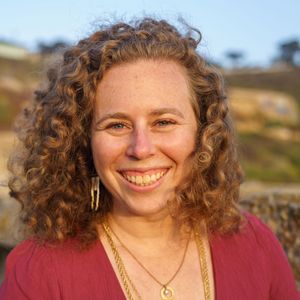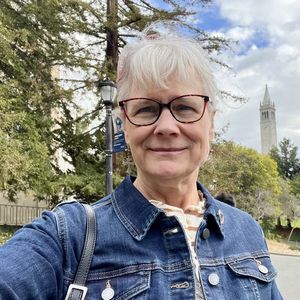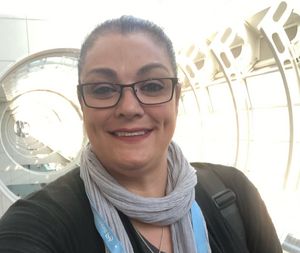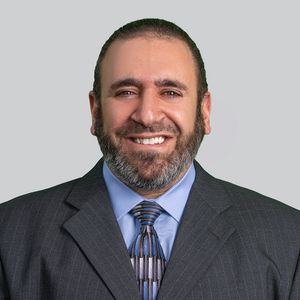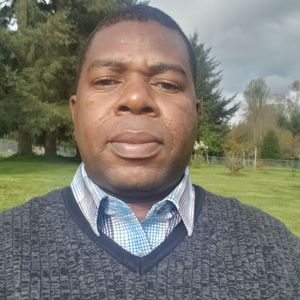Madrasa-Midrasha Student Grants
Haas Summer Interreligious Research Grant - Deadline Extended to April 21, 2025
Each year the Madrasa-Midrasha Program offers summer research grants for students working on interreligious projects related to Judaism and Islam, funded through generous support by the Walter & Elise Haas Fund.
- Grants typically range from $250 to $500 for individual projects and $500 to $1000 for joint projects.
- Student(s) must be in the GTU MA or PhD degree program focusing on Jewish Studies and/or Islamic Studies and/or have registered for a course with the GTU's Center for Islamic Studies, Richard S. Dinner Center for Jewish Studies, or Interreligious Chaplaincy Program during the current academic year.
- Proposed projects must be interreligious, or relevant to interreligious work, engaging Jewish and/or Islamic perspectives in conversation with other traditions. Projects that address both Judaism and Islam will be given priority.
The deadline for submissions is April 21, 2025 at 5pm PT.
Jail Chaplains Broadening Interfaith Understanding
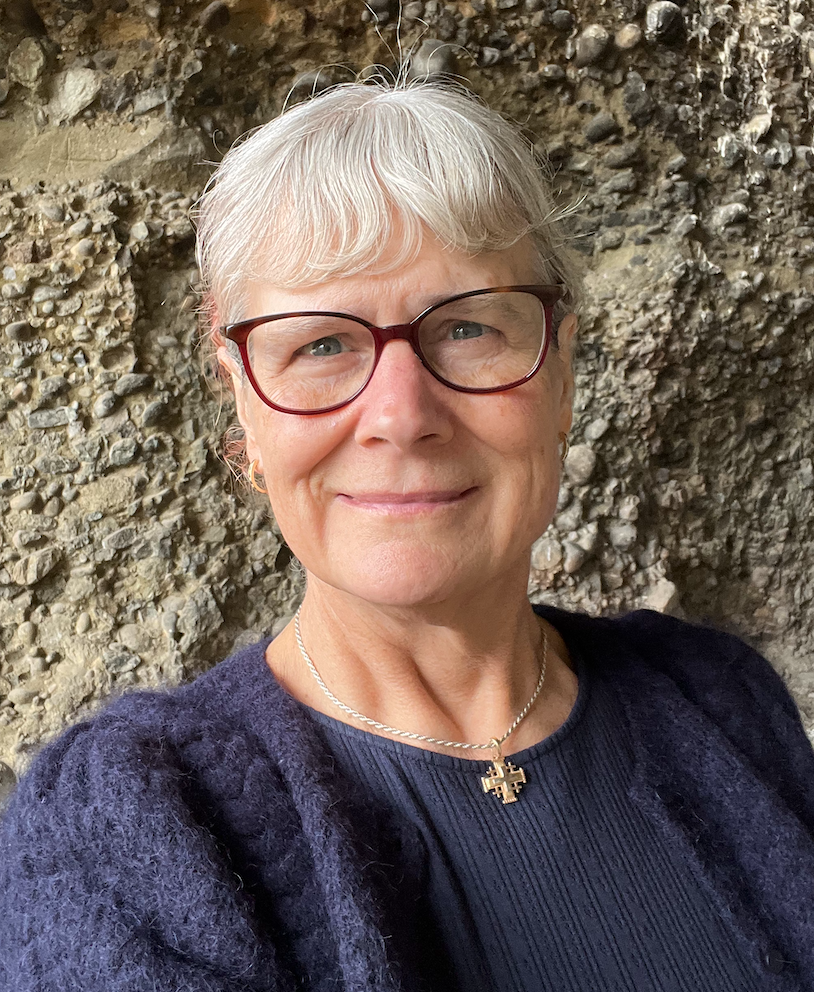 Katy Dickinson, DMin
Katy Dickinson, DMin
Expand and formalize dialogue in the Correctional Institutions Chaplaincy (CIC) on ecumenical and interfaith understanding focused on the Abrahamic religions followed by the vast majority of county jail inmates. The first phase of this new program will serve staff chaplains. Based on the success of phase one, plan for future phases to include CIC volunteers and potentially inmates. The program goal is to enlarge our spiritual vocabularies and facilitate spiritual growth across Judaism, Islam, and Christianity. This would result from a series of moderated discussions developed by CIC Chaplain Katy Dickinson in collaboration with Jewish, Muslim, and other chaplains as needed.
Women’s Voices for the Oppressed: Rachel and Zeynab in Islamic and Jewish Tradition
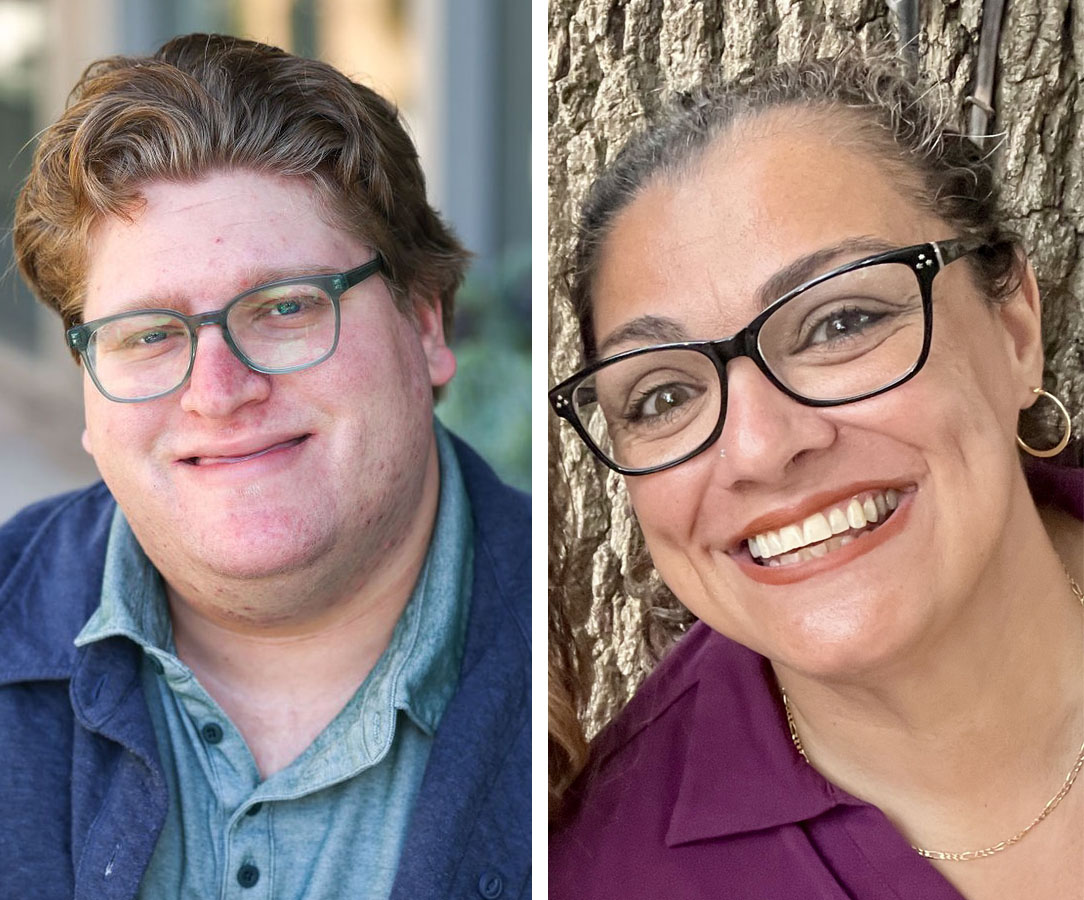 Morey Lipsett and Raya Hazini
Morey Lipsett and Raya Hazini
Our research project is a collaborative study using Indigenous research methods along with textual and comparative work to explore the role of two women from the Islamic and Jewish traditions who advocated for defeated and oppressed people. We will compare Zaynab bint ʿAli granddaughter of the Prophet Muhammad who efended her people from the Umayyad Caliphate after the battle of Kabbalah, and Biblical Matraich Rachel who in the midash Lamentations Rabbah, advocated to God on behalf of the Jewish people. This project highlights how Rachel and Zaynab embody moral authority, spiritual continuity, and the redemptive power of collective mourning.
Mystical Meditations: Examining Jewish-Muslim Scholarship toward Women’s Mysticism and Their Identity in Contemporary Religiosity
 Adeyemo Taiwo
Adeyemo Taiwo
I explore the intersections of Jewish and Muslim scholarship on women’s mysticism and the shaping of female religious identity in contemporary contexts. By examining classical and modern texts, theological works, and lived religious practices in Nigeria, I highlight how both traditions interpreted women's mystical experiences. I further investigate how these interpretations have evolved and how contemporary scholars and practitioners in both faiths are reimagining women's roles within spiritualized traditions in a multi-religious Nigeria. I therefore, pay special attention to the Jewish women’s mystical and the Muslim women’s Sufi practices so as to shape and reshape socio-religious cultural narratives of women mystics whose voices have often been overlooked by selecting Jewish synagogues and Muslim mosques in Nigeria while relying primarily on historical and comparative methods to achieve its specific objectives through an ethnographic survey.
Sacred Questions
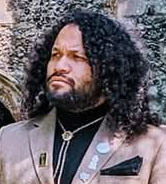 Pablo Vazquez
Pablo Vazquez
An interreligious dialogue series hosted thrice in September 2025 at the GTU, convening theologians, clergy, and scholars from diverse faiths including Zoroastrian, Christian, Muslim, Jewish, Hindu, and Buddhist traditions to engage urgent theological and ethical themes. Topics include ecotheology, governance, and economic justice, with each panel rooted in honest interreligious engagement and dialogue to address issues of the day. The series emphasizes comparative theology as both academic and lived engagement, highlighting underrepresented voices and fostering ethical reflection on shared concerns. Inspired by the Zoroastrian principle of Hamazōr, this initiative envisions a future shaped by collaborative moral wisdom across religious traditions.
Serpents of Power: A Comparative Study of Serpentine Ritual Standards in Shīʿī Islam, Judaism, and Orthodox Christianity
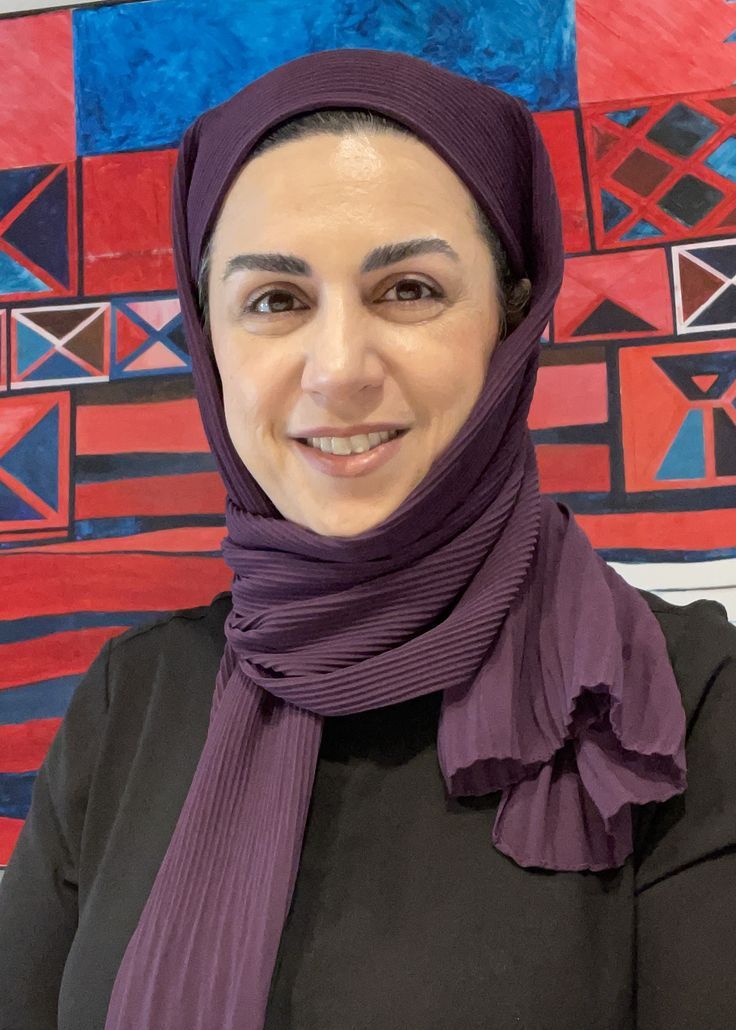 Zeinab Vessal
Zeinab Vessal
This project explores serpentine imagery’s theological and ritual significance as processional standards in Shīʿī Islam, Judaism, and Eastern Orthodox Christianity. Focusing on the Shīʿī ʿAlam finials, the biblical bronze serpent (Nehushtan), and the Orthodox bishop’s crosier, the study investigates how these zoomorphic forms serve as symbols of healing, divine authority, and communal memory. Through comparative analysis of visual and textual sources, this research highlights shared sacred semiotics across traditions and reveals how serpent symbols—often misunderstood—materialize theological meaning and ritual presence. The project contributes to interreligious dialogue through a unique lens of sacred materiality and visual theology.
Menstruation in Judaism and Islam: Feminist and Queer Approaches
Carey Averbook
There are restrictions and prohibitions around the time of menstruation in both Judaism and Islam. This project continues Jewish studies research already begun to reinterpret the purification categories of tumah and taharah in the context of reinterpreting niddah through a queer lens. This project also begins research into feminist Islamic scholarship about menstruation. By exploring questions around holiness and potential spiritual, relational, and physical health benefits of menstruating through feminist and queer reinterpretations of practices and law around menstruation in Judaism and Islam, this project seeks to open new pathways to meaning, relevance, and greater well-being for menstruators.
Carey Averbook grew up in North Carolina, lived in Washington, DC and Bolivia, and moved to the Bay Area in 2019. They have background in anthropology and international development, photography and video production, storytelling, human-centered design, emotional hygiene and spiritual resiliency coaching. All their work has come back to questions about “what’s a good life?” and “what it is to be well as human beings given climate collapse and systems of violence and domination?” Carey is currently an MA student in Jewish Studies at the Graduate Theological Union and is completing an Earth-based Judaism certificate with the Alliance for Jewish Renewal. She works at the Jewish Community Center of San Francisco doing community building and spiritual care work and is on the Ner Shalom Synagogue Nitzanim B. Mitzvah Academy Faculty. They teach Jewish spiritual practice as a community member with congregation Sha'ar Zahav and at Moishe House Rockridge.
Anxieties of Authenticity, Resurgence/Re-Existence, Border Thinking, and Muslim-Jewish Conditions of Modernity
Jibreel Delgado
“Mining tradition for resources that might heal the alienations of modernity” (Naomi Seidman) was a process common to Jews and Muslims in the first half of the last century. In this paper, I consider a select number of Muslim and Jewish scholars who engaged in this extraction of pre-modern jurisprudential and theological material useful to their respective political philosophies. Among the cases I foreground are that of a Moroccan Sufi living under French rule, an Eastern European chief rabbi in the Northeastern United States of the Interwar period, and the last Ottoman Turkish Grand Mufti living in exile in post-Ottoman, pre-revolutionary Arab Egypt.
Jibreel "Biel" Delgado Trabal is a PhD student at the Graduate Theological Union where he is a Research Scholar with the Center for Arts & Religion (CARe) for 2022-23 and 2023-24, and an affiliate of the Center for Islamic Studies (CIS). His area of concentration is Religion & Literature in the Department of Historical and Cultural Studies (HCSR).
The Same and Different: Supporting Muslim and Jewish Inmates
Katy Dickinson
This training event features a panel of experts followed by discussion groups on best practices for supporting jail inmates who are Muslim and Jewish, or are interested in conversion. There are about three thousand inmates in Santa Clara County jail. Eight staff Chaplains and hundreds of volunteers who are Christian, Muslim, Jewish, Buddist and other faiths interact daily with prisoners. For several years, many jail prisoners have had access to county-provided electronic tablets offering education, entertainment, and a range of religious and spiritual scriptures. Discussions with inmates wanting to talk about Islam and Judaism seem to have increased since tablets became available. This event will promote better interfaith understanding in these evolving circumstances.
Katy Dickinson is the Founder of Mentoring Standard and an award-winning Process Architect. Starting in 2001, she was the Process Architect and manager of successful global mentoring programs – while holding a variety of senior executive roles in the Silicon Valley. She was a lecturer on entrepreneurship for 12 years for a University of California at Berkeley – Engineering class. In 2010-2011, Katy Dickinson was the Process Architect for the U.S. State Department’s TechWomen mentoring program. In 2017, Katy Dickinson became a Certified Interfaith Speaker for the Islamic Networks Group. Since 2015, she has been a jail chaplain. In 2021, she was graduated with a Master of Arts – Theology from the Graduate Theological Union (GTU), and in 2022, Katy Dickinson graduated in the first cohort of GTU’s Interreligious Chaplaincy Certificate program. She continues studies in the Berkeley School of Theology – Doctor of Ministry program.
Khamsa and Hamsa: An Inter-Religious Object in Islamic and Jewish Societies
Morey Lipsett
This research aims to study Khamsa/Hamsa as an inter-religious material/object in Islamic and Jewish societies. The Khamsa—also known as the Hamsa, the Humes hand, the Hand of Fatima, and the Hand of Miriam—is a popular symbol found throughout the Middle East, particularly within the Islamic and Jewish faiths. This research scope is the function and cultural dialogs of that object in either society from pre-modern to contemporary times.
Morey Lipsett is a secondary year PhD student in the Historical and Cultural Studies program at the GTU, concentrating in Jewish studies. Morey focuses on queer expressions of Jewish culture and religion through the lens of Critical Theory and Queer Theory. Morey completed his MA in Jewish Studies at the GTU in 2022 and received a BA in Political Theory from the University of Puget Sound in 2019.
The Tales We Tell: What Islamic and Jewish Stories Reveal about Our Religions and Ourselves
Amy Shoemaker
This research aims to unearth some of the core stories within Islam and Judaism that capture people's relationship to their religion, and to explore what meaning those stories hold for individuals. After collecting stories through interviews with lay people and religious leaders, I plan to synthesize and draw lessons from the threads, echoes, and divergences among them, with an eye towards how people's spiritual stories support the ways they move through the world, particularly in the face of hardship. The motivation for this research is to begin to build a corpus of interreligious stories that reflect how we see our religion and how our religions help us see ourselves.
Amy Shoemaker (she/her) is a listener, a learner, and a lover of life’s small joys. She has spent the past four years serving the Stanford Health Care hospital community, first as a Spiritual Care volunteer, then a Chaplain Resident, and now a Relief Chaplain. She holds an MS from Stanford University's Institute for Computational and Mathematical Engineering and is currently pursuing an MDiv at the Graduate Theological Union's Institute of Buddhist Studies. Amy's spiritual homes include her Jewish and Buddhist communities, along with natural spaces big and small that ignite wonder and gratitude. She also loves mornings, books, and tea, especially all together.
The Symbolism of Khamsa in Shi’i Tradition
Zeinab Vessal
Khamsa, an Islamic amulet, serves as a focal point in my interdisciplinary study, primarily employing iconography and socio-anthropology, to examine its profound social impact on Muslim societies. This symbolic object, with its diverse shapes, meanings, and functions, assumes varying roles in Islamic contexts, such as serving as finials for mourning ceremonies within Shi'i Muslim societies and possessing a talismanic value imbued with divine significance in the broader Muslim world. By exploring the historical and cultural significance of Khamsa, this research aims to facilitate inter-religious dialogue between Muslim and Jewish societies and foster a deeper understanding of the shared material cultural heritage on this object. Moreover, it seeks to elucidate how shared cultural objects are interpreted divergently across societies, thereby promoting stronger inter-religious and collaborative bonds through the medium of material conversation.
Zeinab Vessal is a Ph.D. student in Art and Religion Program at Graduate Theological Union in Berkeley. Her primary field of research is Islamic material culture and Shiʿi iconography, paintings, emblematic, and ritualistic objects in early modern to modern Iran. Her second concentration as a professional Islamic calligrapher is studying Persian and Arabic manuscript traditions. She also looks at the Shiʿi visual culture of post-revolutionary Iran.
Women Standing Up and Standing Out: An Examination of the Female Impact in Judaism and Islam
Raya Hazini
When looking at Abrahamic religions, our society places Judaism and Islam on opposite ends of the spectrum. By looking at how women played a significant role in the formation of these religions, my research will show how Judaism and Islam are more similar than different. I will examine the social structure of women, the impact that women from other lands contributed to the growth of the religions, the morality of their stories and the impact they made within the religious community to show that not all women were subjected to male rule (qawwamun), and that there were those who sometimes spoke out against it. Through sharing these women’s stories, I will highlight their devotion to God (HaShem /Allah) and how they are remembered. A close examination of women’s roles within these religious traditions will reveal that women had a bigger role than previously acknowledged.
Raya Hazini holds a BA in Religious Studies from CSU Sacramento and an MA in Religious Studies from Cardinal Stritch University. Her personal religious ancestry comes from Judaism, Catholicism, Protestantism, and Islam and five generations ago her family became part of the Bahá’í Faith. As a fifth generation Bahá’í, she wants to honor her ancestry through her work. Born and raised in California, Raya loves to be outdoors on her paddle board.
Study of Fetus Development in Islamic and Jewish Religious Resources
Faisal Azar
The research aims to enhance the knowledge of fetus development in the light of Islamic and Jewish religious resources as a natural event. There are few works of literature on similar biblical and quranic historical events. Quran verses and sayings of the prophet Muhammed will be collected and Biblical and Talmudic passages. The research is to open a new dimension in interreligious study and dialogue. Moreover, the research will find a common perspective in Islam and Judaism on fetus development and how these religions have discussed this natural event to help believers comprehend a biological process as a sign of the divine when creating humans. Passages in these sources would be collected stating and resembling the fetus's development process. This method helps to bring all scattered verses and narrations into a single document about the fetus's growth and hence helps the reader find all related literature at once.
Interreligious Peacebuilding through Promoting Holistic Justice: Exploring Israeli-Jewish and Palestinian-Muslim Women Grassroots Models of Holistic Interreligious Peacebuilding Joint Initiative
Raphael Mkuzi
One of the protracted conflicts in the world today that seem to defy the efforts of experts in conflict transformation and peace building is Israel-Palestine conflicts. Peace building treaties have been signed and collapsed over the years and hope for a new future has been flashing on and off. Most often, the focus has been the high ranking peace building meetings involving international diplomats and using top-bottom approaches. Perhaps, few have tempted to investigate the presence of bottom-up approaches to peacebuilding: efforts taken by the local communities. In this regard, this project endeavors to explore the ground efforts to peace building that get less publicity on the international media, yet there are evidence of tremendous positive fruits from these seemingly insignificant efforts. Jerusalem link is one of such organizations comprised of Israeli-Jewish and Palestinian-Muslim women in Hebron; model project where complicated and multifaceted conflicts are discussed on face to face encounter. It’s an organization that demonstrates how interreligious dialogue through social economic issues can effect positive change in the society.
Raphael D. Mkuzi is a third year PhD Candidate in the Department of Historical and Cultural Studies of Religion (HCSR) at Graduate Theological Union in Berkeley, California, where his concentration is in the area of Comparative Religion. He also takes courses in economics from the University of California, Berkeley. Originally he comes from Malawi, Africa, with an academic background in interreligious dialogue and peacebuilding between Muslims and Christians. He did his Advanced Masters degree in Systematic Theology at the Catholic University of Leuven in Belgium. His current research interest is on the theme: Interreligious Peacebuilding through Promoting Economic Justice in the Context of Malawi, Africa.
The Unrecognized Purge: Recovering the Muslim Narrative from a Joint Jewish-Muslim Experience
Laura Anne Miller
Historically, both Spanish Jews and Muslims have been victims of forced Christianization and eventual exile from the peninsula. Whereas Spain has officially apologized for its genocide against Sephardic Jews and granted dual citizenship rights for Jews with Sephardic ancestry, no analogous actions have been taken vis-à-vis the descendants of Spanish Muslims. I intend for my research to shed light on how the Muslim experience in sixteenth-century Spain mirrored the Jews’ earlier experience, and why it is necessary to holistically understand the Christian European origins of modern Islamophobia and antisemitism if both are to be defeated. Antisemitism and Islamophobia are both diseases of (Christian) Europe; Muslims should be at the forefront of fighting antisemitism, and Jews should be at the forefront of fighting Islamophobia. Andalucía is arguably the only place in the world that has passed permanently out of Dar al-Islam. These days, as Giles Tremlett notes, Andalucía (especially Granada) is heavily marketed to tourists as “Moorishland,” a type of “orientalism-with-tapas.” Yet Andalucía lacks a living indigenous Muslim population – a 400-year-old tragedy that was, for all intents and purposes, a cultural genocide, but has not been officially recognized as such.
Laura Miller is currently a doctoral student in Islamic Studies (History and Culture). She is studying Spain’s Muslim population from 1492-1609, in order to understand how Spanish Muslims went from being the rulers of Al-Andalus to a racialized Morisco minority, which culminated with their expulsion from Spain in 1609.
Art, Spirituality and Chaplaincy: Exploring the Engagement with Art in Self-Care and Patient Care
Sakinah Alhabshi & Mia Trachtenberg
Our research focused on two main areas: how hospital Chaplains used art and creativity in engaging with patients, as well as how they leaned on it to cultivate their own self-care and resilience. While some of our findings showed how Chaplains directly connected to their Jewish and Islamic traditions through Hebrew song, melodious recitation of the Qur’an, appreciation of the Creator and Creation (nature-based reflection, poetry, etc.), other explorations of art and creativity were more open / secular in nature – playing creative games, water-color expressions of their inner emotional and spiritual state, free-flow and prompted prose/poetry writing.
A notable value we realized was that when artistic expressions were facilitated by a Chaplain, in a non-judgmental, accepting and spiritually-reflective approach, it seemed to allow for more freedom and creative empowerment for the patient. We look forward to sharing more of our findings and inviting Chaplains onto a panel webinar in the Madrasa-Midrasha program this Fall.
God’s Co-Creators: Spirituality, Childbirth and Mothering
Jennifer Springsteen
Do motherhood, caretaking and nurturing practices and traditions give women a role as co-creator?
To answer that question, I hoped dispel that the Fall in the Old Testament meant a lifetime of penance for women. Rather, that motherhood is seen by both Jewish and Muslim women and men as a blessed act. A privilege.
I researched articles, books and sacred texts, interviewed women, and read literature and poetry. While none of my research uncovered the language of “God’s Co-Creator,” what I kept hearing again and again was the essence of co-creating; it was a feeling that motherhood deepened a connection with the Divine no matter the technicalities or beliefs of how the women (Eve, Mary, Hagar, myself) were impregnated. Playing a role in creation binds us to God, leads us to love unconditionally, and presses our hearts with gratitude.
I learned semantics are important. No human or animal can truly know the mystery behind the source of all creation. Yet the miracle of conception and birth, all the knowledge one gains caring for a child continue to interest our humble, spiritual selves.
Perhaps that is why we listen for truth in the words of poets.
Jewish Influence on Women’s Dress and Fashion in Egypt
Reem Kosba
This research examines the contemporary fashion system in Egypt and the rising second generation of designers in the post-Arab Spring period. I look at the changing nature of dress in Egypt in the century between 1850 and 1950 as a time characterized by political, economic, and cultural transformations, prompting gradual yet major alteration in dress among urban populations, mainly in Cairo. There is no trace of a local mass fashion industry akin to or competing with Euro-American ones, at least not before 1930. During that period, Egypt adopted the industrialization of textiles on a large scale characterized by the cultivation of long-staple cotton as part of a broader national movement against British imperialism. Therefore, it is worth centering the role of department stores and the printing press as platforms for marketing and selling Western imported clothes, which served as an arbiter, classifier, and educator of taste and style.
Blacks and Jews: A People of Displacement
Nosizwe Breaux-Abdur-Rahman
This series of essays will examine the black/African Muslim and Jewish diaspora experiences, alongside their historical significance and impact on each group’s plight for self-determination. The implications of a shared diaspora experience, yet different socio-political and economic outcomes, will be explored through current-day relations between black/African American Muslim communities and Jewish communities. The first essay will introduce the historicity of blackness as a fluid concept and signifier. The next part of the first essay will define and examine diasporic frameworks and the historical significance of the African and Jewish diasporas. The second essay maintains that blacks and Jews are historically diasporic populations while delving into a closer examination that reveals points of convergence and divergence. The third and final essay probes further into the points of convergence, which have created bonds of empathy and solidarity, and points of divergence, which have caused underlying tensions and sometimes led to conflict and estrangement. These essays intend to promote inter-and intra-religious and cultural introspection and discourse among black/African American Muslim and Jewish communities.

